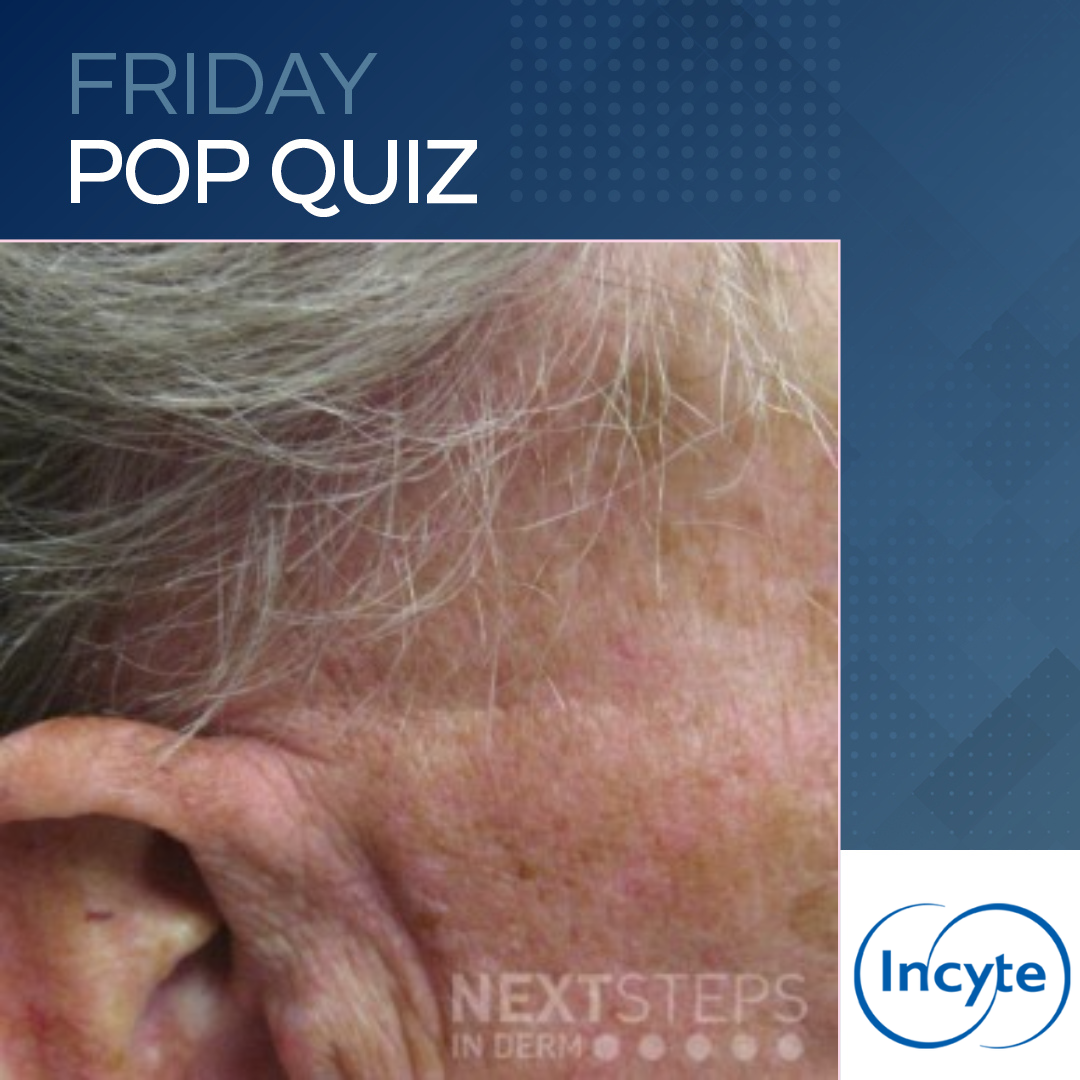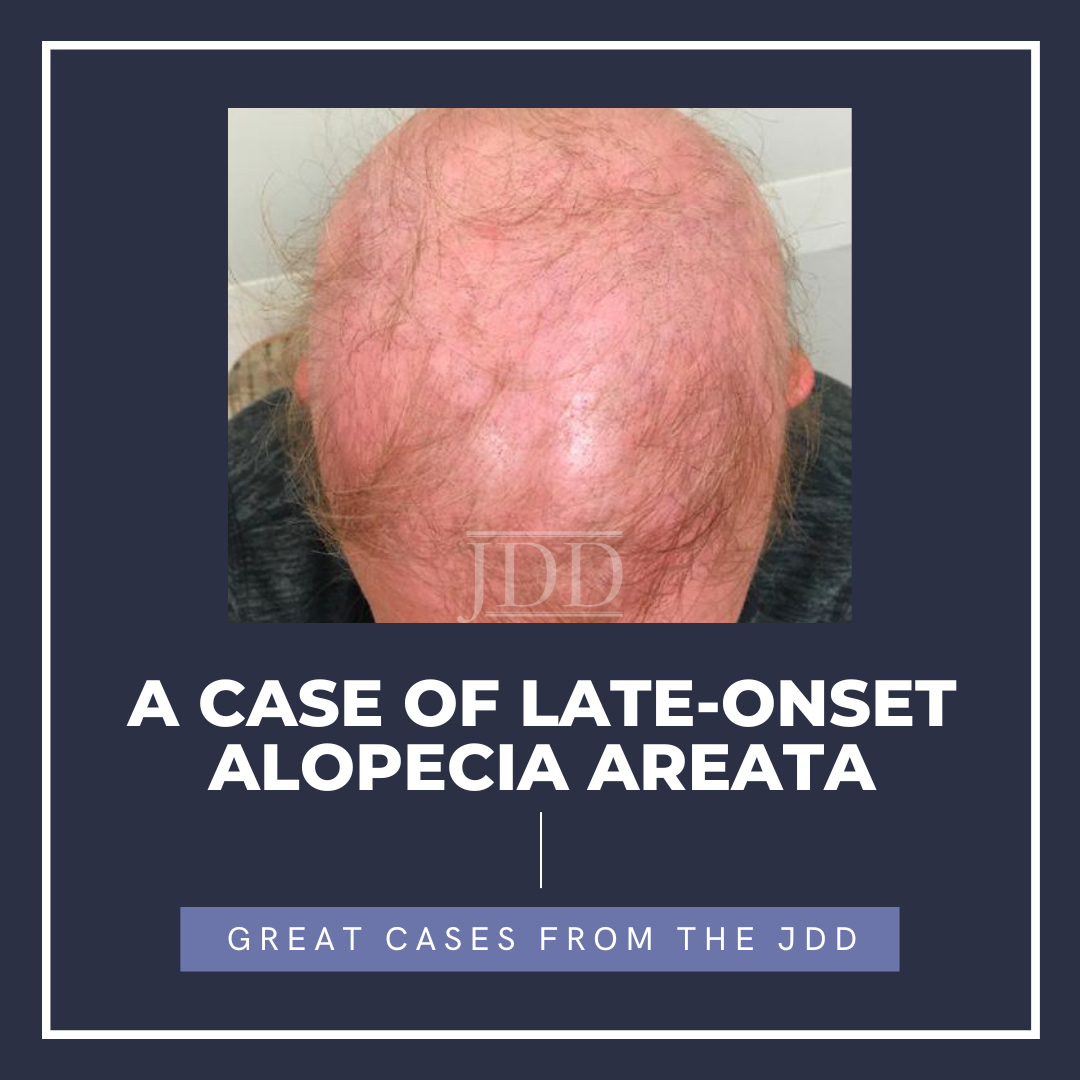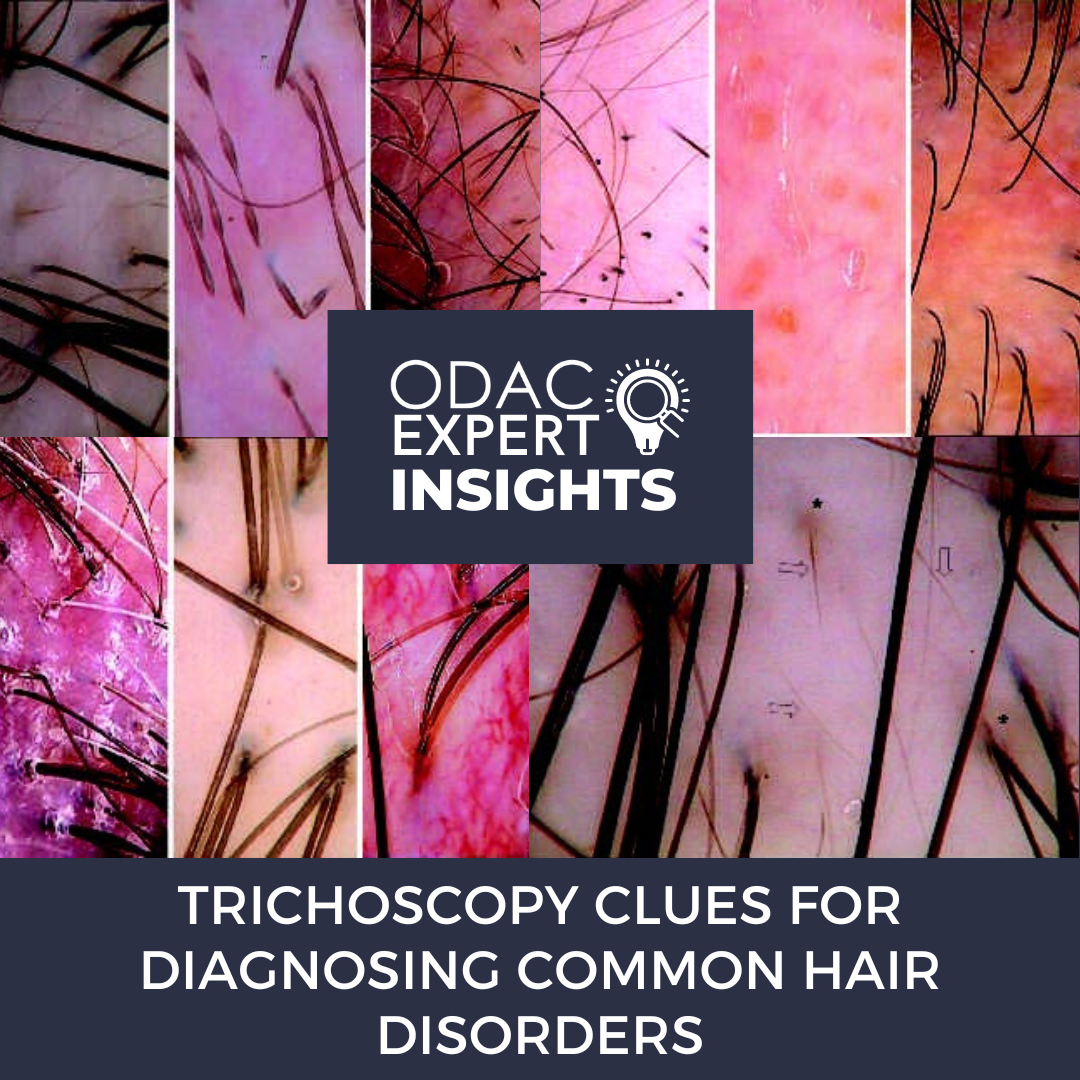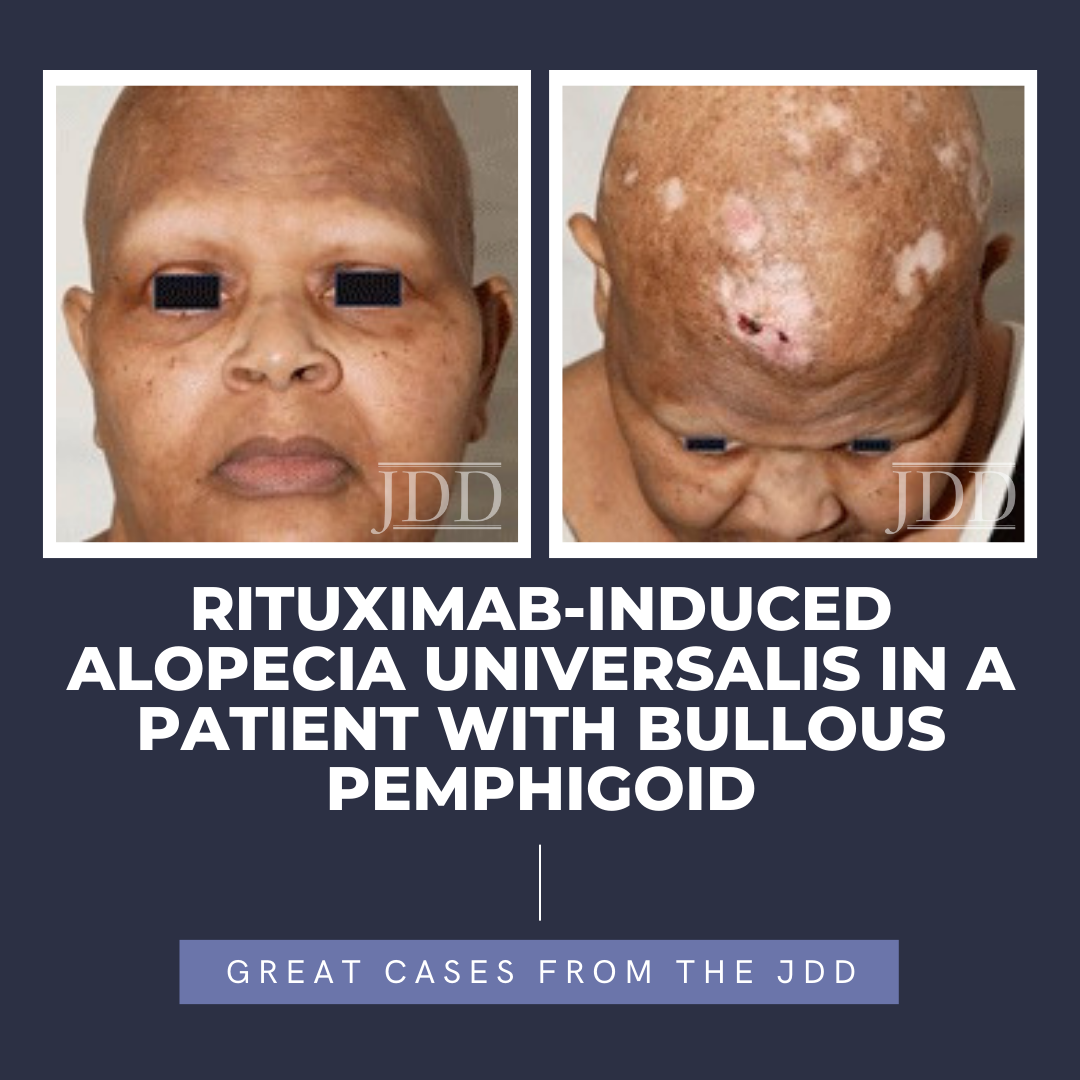Hair Loss – Friday Pop Quiz 10/13/2023
 A healthy 50-year-old patient presents with three-month history of progressive hair loss and scalp redness with associated pruritus. On closer scalp examination, there is perifollicular erythema, inflammation, and scaling. There appears to be loss of follicular openings in the erythematous patch. In addition, erythematous and skin-colored papules are present throughout the forehead. Of note, t …
A healthy 50-year-old patient presents with three-month history of progressive hair loss and scalp redness with associated pruritus. On closer scalp examination, there is perifollicular erythema, inflammation, and scaling. There appears to be loss of follicular openings in the erythematous patch. In addition, erythematous and skin-colored papules are present throughout the forehead. Of note, t …
 A healthy 50-year-old patient presents with three-month history of progressive hair loss and scalp redness with associated pruritus. On closer scalp examination, there is perifollicular erythema, inflammation, and scaling. There appears to be loss of follicular openings in the erythematous patch. In addition, erythematous and skin-colored papules are present throughout the forehead. Of note, t …
A healthy 50-year-old patient presents with three-month history of progressive hair loss and scalp redness with associated pruritus. On closer scalp examination, there is perifollicular erythema, inflammation, and scaling. There appears to be loss of follicular openings in the erythematous patch. In addition, erythematous and skin-colored papules are present throughout the forehead. Of note, t … 

 INTRODUCTION
Alopecia areata (AA) is a condition characterized by nonscarring hair loss. Cases of alopecia areata are most commonly seen in patients under age 30 and are frequently idiopathic. In this report, we discuss a woman in her 50s who developed AA shortly after receiving the Tdap vaccine and after one year of guselkumab therapy.
CASE
A woman in her 50s with history of psor …
INTRODUCTION
Alopecia areata (AA) is a condition characterized by nonscarring hair loss. Cases of alopecia areata are most commonly seen in patients under age 30 and are frequently idiopathic. In this report, we discuss a woman in her 50s who developed AA shortly after receiving the Tdap vaccine and after one year of guselkumab therapy.
CASE
A woman in her 50s with history of psor …  A dermatologist is behind the latest TikTok trend making news in the consumer press. Dr. Scott Walker posted about the importance of regularly cleaning your shower head, and the post received coverage by Yahoo’s In The Know. Dr. Walker recommends monthly cleaning to rid the shower head of dirt and bacteria that can become airborne during a shower. Dr. Walker says the bacteria is linked to skin d …
A dermatologist is behind the latest TikTok trend making news in the consumer press. Dr. Scott Walker posted about the importance of regularly cleaning your shower head, and the post received coverage by Yahoo’s In The Know. Dr. Walker recommends monthly cleaning to rid the shower head of dirt and bacteria that can become airborne during a shower. Dr. Walker says the bacteria is linked to skin d …  Trichoscopy is a handy dermoscopic tool that can be used at the bedside to diagnose multiple hair diseases. However, these hair diseases may be challenging to diagnose by the untrained eye. Fortunately, we had the opportunity to train these skills at ODAC 2023 with hair expert and dermatologist Dr. Amy McMichael, Professor of Dermatology at Wake Forest University. We will review the essentials of …
Trichoscopy is a handy dermoscopic tool that can be used at the bedside to diagnose multiple hair diseases. However, these hair diseases may be challenging to diagnose by the untrained eye. Fortunately, we had the opportunity to train these skills at ODAC 2023 with hair expert and dermatologist Dr. Amy McMichael, Professor of Dermatology at Wake Forest University. We will review the essentials of …  Alopecia areata is a CD8+ T-lymphocyte driven autoimmune disorder leading to reversible hair loss. While most commonly presenting as isolated well-demarcated non-cicatricial alopecic patches on the scalp, subtypes of alopecia areata include alopecia totalis with loss of all scalp hair and alopecia universalis with complete loss of all body hair. Although primarily an idiopathic condition, several …
Alopecia areata is a CD8+ T-lymphocyte driven autoimmune disorder leading to reversible hair loss. While most commonly presenting as isolated well-demarcated non-cicatricial alopecic patches on the scalp, subtypes of alopecia areata include alopecia totalis with loss of all scalp hair and alopecia universalis with complete loss of all body hair. Although primarily an idiopathic condition, several …